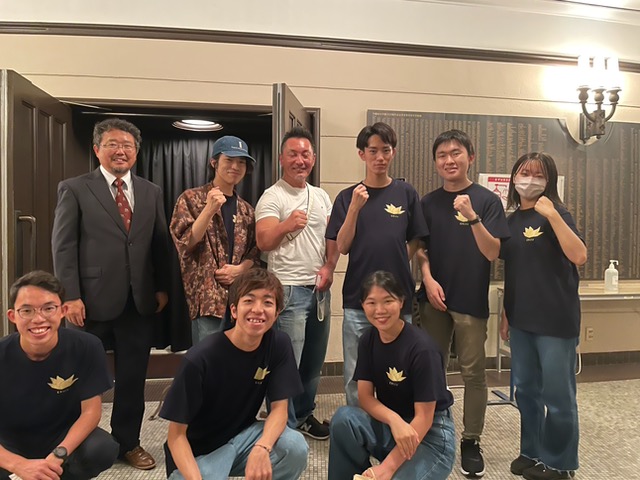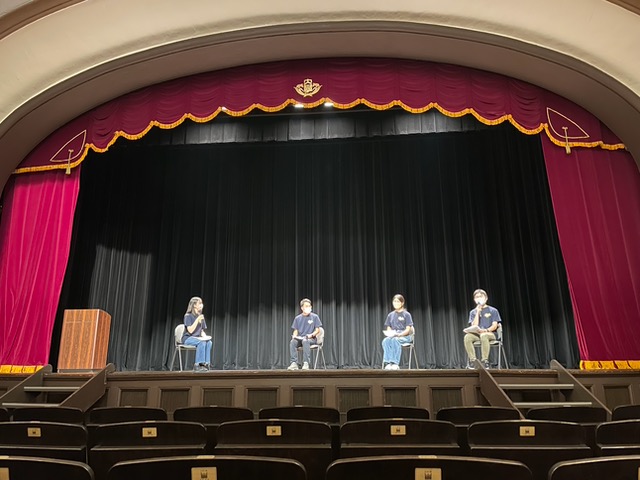The Power of Stories Beyond Borders: Insights from the International Reconciliation Film Festival
2025年10月
Nanaho TSUTSUI (Senior, Waseda University, School of Education, Major of Society)
Today, more than sixty-five years after the normalization of diplomatic relations between Japan and South Korea, cultural exchange between the two countries has expanded more than ever before. Yet I have often felt that, while cultural exchange is becoming more active, there still exists a wide gap when it comes to politics and historical issues. It was in this context that I encountered the ERIFF International Reconciliation Film Festival. The festival’s mission was to “promote dialogue and mutual understanding at the civic level through film, and to advance the path toward reconciliation.” Its aim was to watch films together that deal with East Asia’s history, conflicts, and tensions, and to create opportunities for discussion. At the same time, it sought to explore the possibilities of reconciliation by encouraging young creators from East Asia to freely express the theme of “reconciliation” through visual storytelling, and by sharing these works with a wider audience. By inviting submissions from the younger generation and disseminating their works broadly, the festival set out to cultivate a “culture of reconciliation.”
When I began attending university, after the worst of the COVID-19 pandemic had subsided, I came across a call for volunteers for the festival’s organizing committee, just as preparations for the inaugural festival were underway. I joined at this foundational stage, which provided me with invaluable experience. Could reconciliation truly be possible? Could people burdened with the weight of historical conflicts face reconciliation together? Although reconciliation may appear difficult, the festival was based on the belief that something essential could be conveyed through film—through images, gestures, and expressions that transcend words.
The festival had two distinctive features. First, it discovered and showcased young creators from East Asia through an open call for submissions. Second, through the “Co-Creation Project,” it enabled creators and students to collaborate and produce works together. The very process of creating, screening, and discussing films was itself a practice of building connections between people and experiencing reconciliation firsthand.
I participated as a member of the organizing committee for both the first and second festivals, contributing to the selection of films, the writing of program notes, event management, and even serving as moderator for post-screening discussions. Moderating these discussions required me to elicit diverse opinions from students, including international students, and weave them into a meaningful dialogue. While it was not easy to bridge different backgrounds and perspectives, this challenge made me realize the importance—and the difficulty—of sustaining spaces for cultural dialogue, providing me with significant opportunities for personal growth.

Among the films screened, The Road Called Life: The Man of White Porcelain left a particularly strong impression on me. I was deeply involved in preparations, from film selection to moderating the discussion. The protagonist, Takumi Asakawa, was a Japanese forestry engineer who moved to the Korean Peninsula, where he dedicated himself to reforestation while becoming fascinated by Korean folk crafts, particularly white porcelain, and introduced their value to Japan. He recognized that Korean pines were best suited to the local soil and practiced reforestation rooted in the land. By learning the Korean language, adopting local attire, and working to preserve folk crafts, he embodied an attitude of respecting culture and living together with others. His words in the film—“Even if we cannot change history, we can still plant trees before us”—symbolized a quiet yet resolute determination. By loving Korea’s soil and trees, Asakawa firmly believed in relationships nurtured through respect for others in their authentic form.
In contrast, the film also depicted other Japanese characters as lacking understanding and empathy. Asakawa’s mother, for instance, repeatedly uttered derogatory remarks such as “the Koreans are…,” embodying the prevalent prejudices of the time. In the post-screening discussion, opinions diverged: some praised Asakawa as a “symbol of reconciliation through culture,” while others criticized him as an exceptional case whose actions risked obscuring the broader history of discrimination. As moderator, I posed the question, “Why are we screening this film at a reconciliation film festival today?” In considering this, participants focused on a scene where, after Asakawa’s death, his grieving mother is comforted by an elderly Korean woman who tells her, “Cry as much as you need.” Although the two women could not fully understand one another, in that shared moment of maternal grief, they seemed to face the same direction. From this, we realized that while national divides may remain unbridged, shared human emotions can serve as a driving force toward reconciliation. Storytelling experiences like cinema, we concluded, provide vital opportunities for sharing such emotions.


